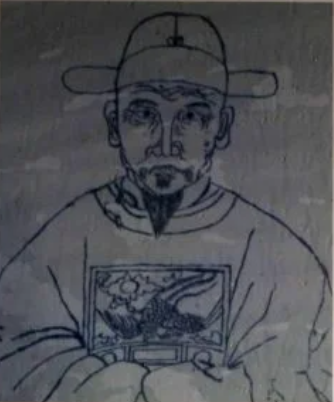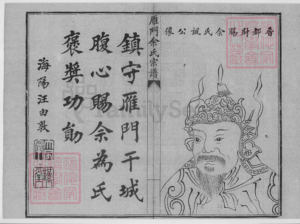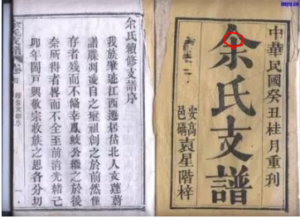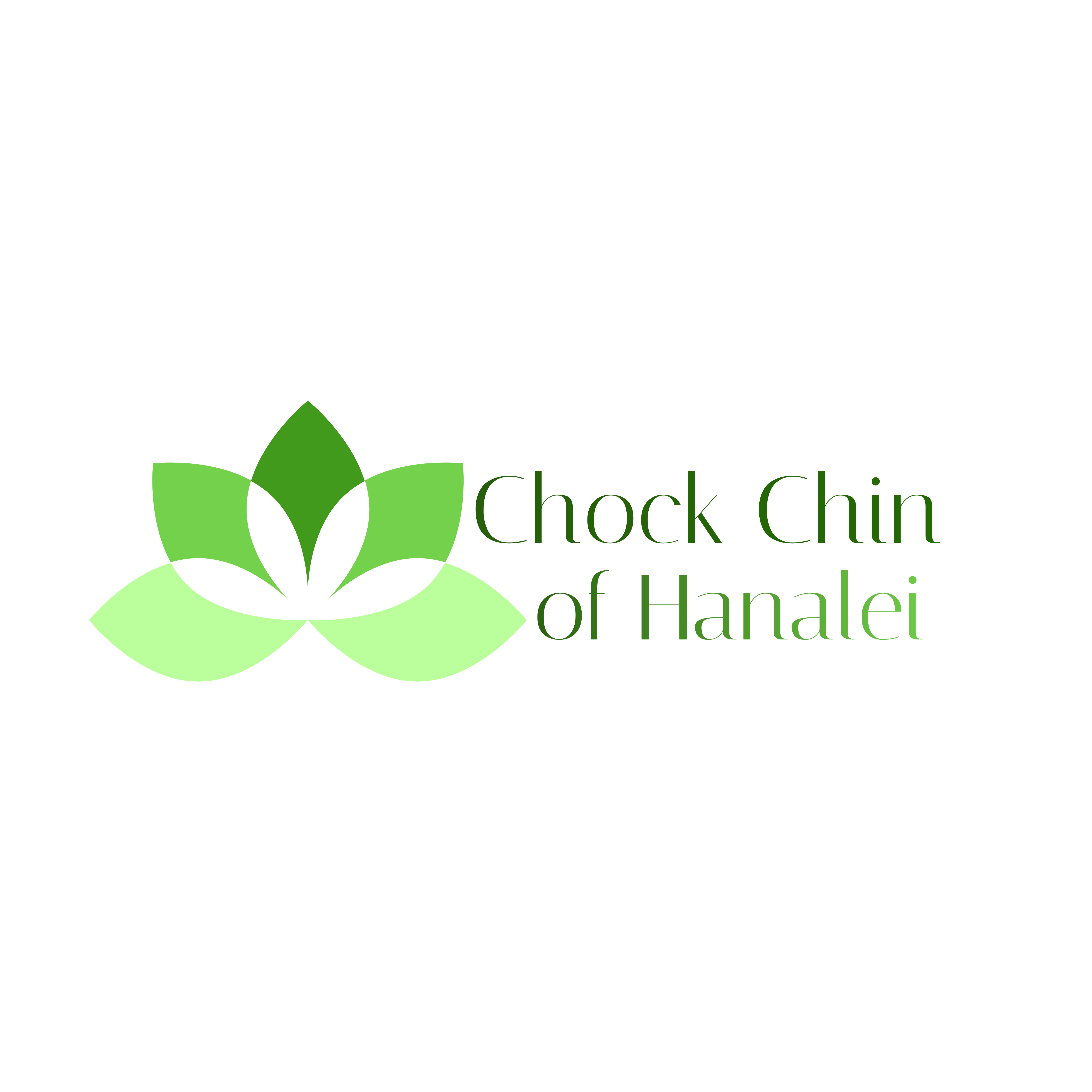The She clan has a long history in Guan Tang village, and intermarried with the Zhuo clan many times throughout the years. Louise has been researching them as part of our project to find the ancestral lines of the women who married into the Zhuo clan.

She Neng Shun佘能舜
As with most Chinese histories, these are long chains of family stories that can be connected if you know how to find the start and end points.
In the Guan Tang She jiapu, Louise found out that the first ancestor for the Guan Tang She was She Shi Tai who was born around 1300. The jiapu only briefly mentioned a few of the early ancestors’ stories and didn’t provide detailed genealogical information. Beyond She Shi Tai, there was very little information that would point the way to what happened before they moved to Guan Tang.
![]() Here is She Shi Tai’s FamilySearch record.
Here is She Shi Tai’s FamilySearch record.
Before the move to Guan Tang
Louise went back to the Guan Tang History Book that had been created by Zhuo Bing Quan after his years of research, to see if there was anything more in there that might shed some light. To her great delight, on pages 12-13 she discovered the names of She Shi Tai’s father (She Neng Shun佘能舜, born in 1254 AD) and brothers, and also the villages where the family lived before She Shi Tai moved to Guan Tang.
Using this vital information, Louise was able to find an article about the ancestral hall (family temple) of She Shi Tai’s father, located in Ma Gang Village.

Ma Gang She Ancestral Hall 馬崗佘氏宗祠

Inside the Ma Gang She ancestral hall

She clan history posted in Ma Gang ancestral hall
On one of the interior walls of the Ma Gang temple, there is a sign that provides an overview of She clan history. Zhuo Bing Quan took a picture of the sign and sent it to Louise. The sign explains that the She clan can trace its origins back to the Shang Dynasty (1600 BC). However, the first ancestor to actually record the She family history lived in the Han Dynasty (115 AD). There are 18 generation names listed, who are the direct ancestors of She Shi Tai. Some generations are not listed. In the image, Louise has circled in red and blue the ellipses (…) that indicate there are missing generations.
Fortunately Louise was able to find the missing names circled in red and blue. She said, “Your She clan family tree goes all the way to the Han Dynasty without any missing link. I have checked some of your She early ancestors’ names in FamilySearch, it seems like that no one has worked on this clan before.”
First She Clan ancestor: Yu余 Feng諷

Yu Feng Portrait from She Jiapu
As Louise explains it, the first She clan ancestor was Yu余 Feng諷 who was born in 280 AD in Jiangxi Province. He was a prestigious scholar who served in the imperial court of Emperor Ming of Jin.
You might be wondering why the first She ancestor has a surname of “Yu” rather than “She”. Louise shared this fascinating little story that tells us a lot about what it meant to be an Emperor, and the implications of having a name with unfortunate homophones.
By all accounts, Emperor Ming of Jin liked Yu Feng and appreciated having this great scholar as part of his court. However, his name grated on him every time he said it. “Yu 余” means “I” in the classical Chinese. “Feng 諷” means “satire”. So evidently, the Emperor did not like that every time he called Yu Feng’s name it sounded like he satirized himself.
![]() The emperor also didn’t like that Yu Feng always gave him advice and told the emperor not to do this and that. So the emperor changed Yu Feng’s surname to She佘. As you can see, the characters are almost exactly the same, except the She character has a shortened stroke in the middle. This was a subtle way of implying a diminishment of the clan — now it cannot be as outstanding as it was before.
The emperor also didn’t like that Yu Feng always gave him advice and told the emperor not to do this and that. So the emperor changed Yu Feng’s surname to She佘. As you can see, the characters are almost exactly the same, except the She character has a shortened stroke in the middle. This was a subtle way of implying a diminishment of the clan — now it cannot be as outstanding as it was before.
He chose the surname She佘 because it is a homophone for the words for “tongue” and “snake” in Chinese. So this name emphasized that since this scholar liked to use his tongue like a snake, he would get a name that matched that desire.
Of course, this was very dangerous and Yu Feng understood it as a threat against his entire clan. So he went so far as to change his given name from “Feng”諷(satire) to “Wan”頑(keeping silent like a stubborn stone).
And thus the She clan was descended from the Yu clan.
According to the other She Zongpu, their first ancestor recorded in the jiapu was Yu Chan余禪 who was born around 80AD. Before Yu Chan, the lineage was not so clear. However, both sources agreed that their earliest ancestor was Yu the Great, the legendary king in ancient China who was famed for his establishment of the Xia dynasty and his upright moral character. Learn more >
Returning to the original surname

She character with extra long stroke
Almost 400 years later, Emperor Gao of Tang (650 AD) allowed the She佘 clan to change back to the Yu surname.
Perhaps because it had been so long since they had used the Yu surname, the families decided to keep the She surname, but they altered the character slightly. They stuck the stroke out further than ever before, perhaps as a silent complaint about the surname being changed by the previous emperor.
Homophones Still Matter to the Chinese
This story may seem strange to Western descendants of the She clan, but Mandarin Chinese is loaded with homophones and associated superstitions and customs that are taken very seriously by many within the culture to this day.
For example, since the word for book – 书 (shū) sounds exactly the same as the word for to lose – 输 (shū),” it is considered extremely rude in China to bring a book into a place where people are relying on luck (like a casino). It’s also sort of like wishing back luck on someone to give them a book as a gift. (Sorry, Louise!)
And the number four 四 (sì) sounds so similar to the word for death 死 (sǐ) that most Chinese buildings do not have a 4th floor.
Check out some more examples here >
So as disruptive as it must have been for the Yu clan to reconfigure their surname, it does seem like Emperor Ming of Jin was just being transcendently Chinese about not wanting to have an advisor named I Satire.
